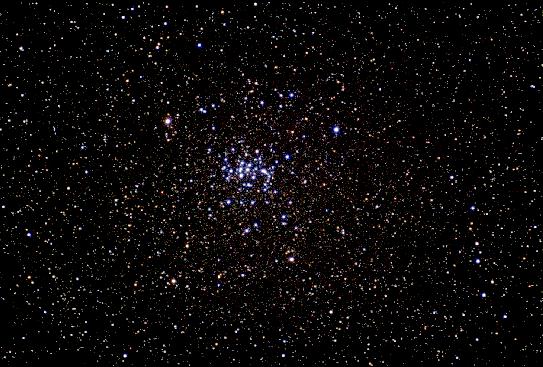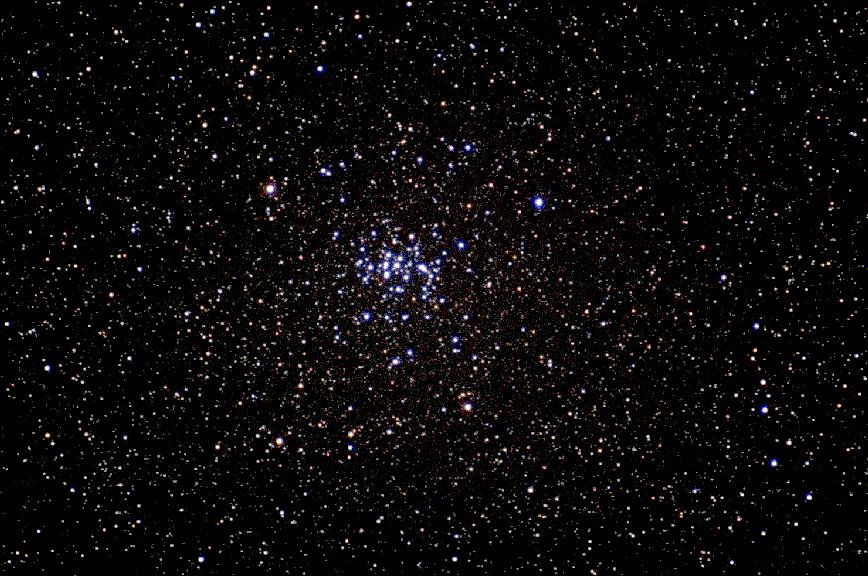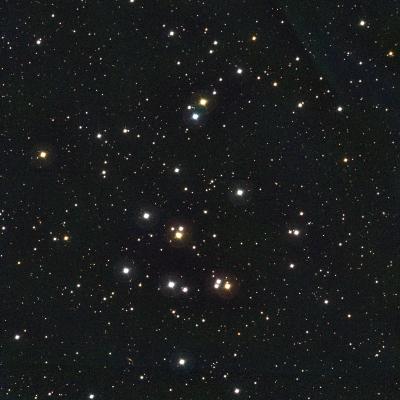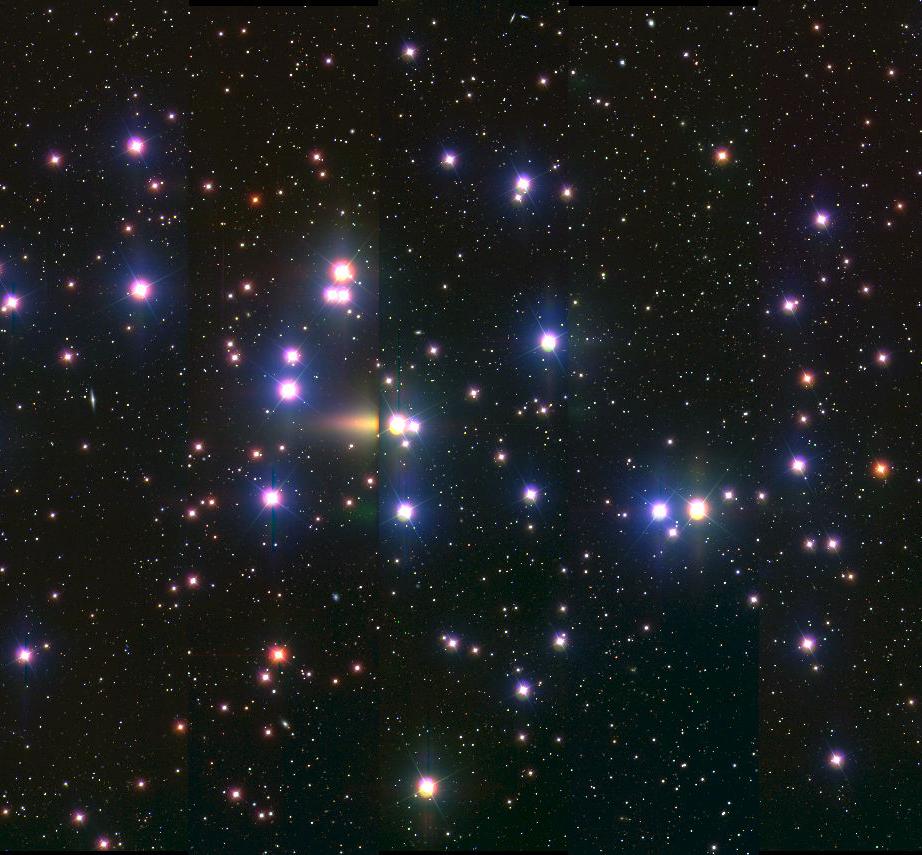Time Travel Research Center © 2005 Cetin BAL - GSM:+90 05366063183 - Turkey / Denizli
The Beehive Cluster - M44


Image of the Praesaepe open cluster (M44) by Sven Kohle and Till Credner of Bonn, Germany, taken on January 4, 1997 at 3:58 UT on La Palma with a 180 mm f/2.8 telephoto lens, exposed 18 minutes on Scotch Chrome 400. The field of view is 7.6 x 11.4 degrees. The image is copyrighted by the observers.

M44, the Beehive CLuster, also known as Praesepe (Latin for manger), is an easy naked eye object more than twice the size across of the full moon, and has thus been noted since prehistoric times. It was one of the first objects on which Galileo trained his newly acquired telescope. M44 is one of the nearest open clusters, close to 600 light-years away.
This approximately true-color picture was created from fifteen images taken in January 1997 using BVR colors, at the Burrell Schmidt telescope of Case Western Reserve University's Warner and Swasey Observatory located on Kitt Peak, near Tucson, Arizona. Image size is 60.9 arc minutes!

Messier 44, also know as Praesepe and the beehive clusters, is a famous cluster of stars in our own Milky Way galaxy. It is at a distance of about 180 parsecs in the constellation Cancer. The stars all formed at nearly the same time, about 800 million years ago. The cluster includes many different types of stars, including main sequence stars, red giants, and white dwarfs, and is often studied by astronomers. The Messier catalog was compiled by Charles Messier as an aid in finding comets - most of the objects in his catalog are faint and nebulous in appearance and easily mistaken for comets. It is unclear why he included this star cluster as object 44 since it is bright and was already well known.
Astronomi Galaxy Resimler Nebula Resimler Yıldız Kümeleri Resimleri Astrophotography
Copyright(c) 2003 - 2004 Cetinbal All rights reserved.